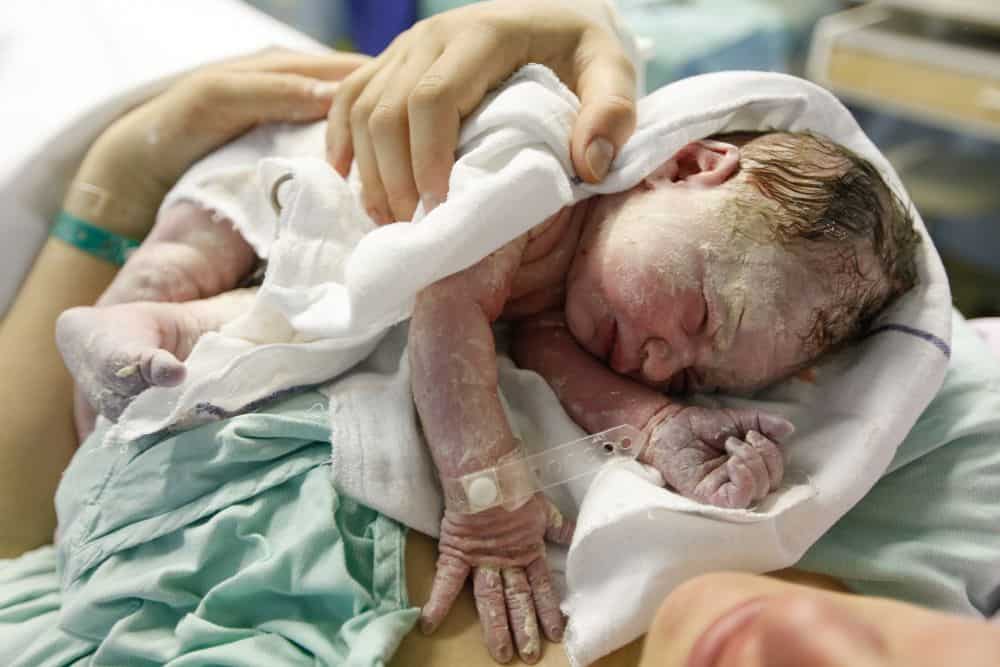The vernix caseosa is a protective layer on the baby’s skin that is white in color and has a texture reminiscent of soft cheese. It develops while the baby is still in the womb and remains attached to the baby’s skin after birth. But what is the purpose of this substance, and why is it there? To understand its significance, it’s essential to consider the environment of the womb, where the baby is growing. For 40 weeks, the fetus is surrounded by amniotic fluid, and vernix caseosa serves as a shield, protecting the baby’s delicate skin from this fluid. Additionally, vernix caseosa contributes to the baby’s skin being smooth and soft after birth and also guards against infections in the womb.

As the time of delivery approaches, the amount of vernix caseosa decreases naturally. It’s perfectly normal for some remnants of vernix caseosa to be present on the baby’s skin even after delivery. Premature babies are more likely to have more vernix caseosa, while babies born later may have none at all.
Now, let’s explore the benefits of vernix caseosa during and after pregnancy.

Vernix caseosa has antimicrobial properties, which is especially valuable for newborns who have sensitive immune systems. While breastfeeding is one way to boost a newborn’s immunity, vernix caseosa also helps protect the baby from infections after birth due to its antioxidant, anti-inflammatory, and antimicrobial properties.
During childbirth, the layer covering the baby’s skin on the body and head facilitates the process due to its texture.

In pregnancy, the mother’s body plays a crucial role in regulating the baby’s body temperature. After birth, it takes some time for the baby to do this independently. Vernix caseosa aids in stabilizing the baby’s body temperature.
Vernix caseosa moisturizes the baby’s skin, making it softer after birth while protecting it from dryness.

Birth photography has gained popularity in recent years, with many couples hiring professional photographers to capture the special moments of childbirth. Among the most cherished photos are those taken seconds after a baby’s birth when they still have vernix caseosa on their skin.

In conclusion, vernix caseosa plays a vital role in protecting and nurturing the baby both in the womb and after birth. Its benefits extend beyond birth, contributing to the health and well-being of the newborn. These unique properties make it a remarkable part of the miracle of childbirth.